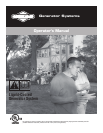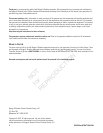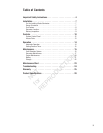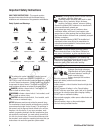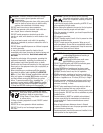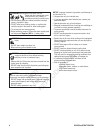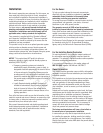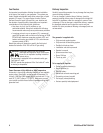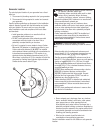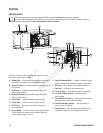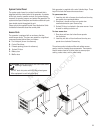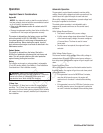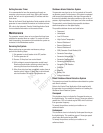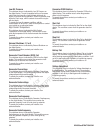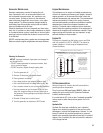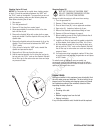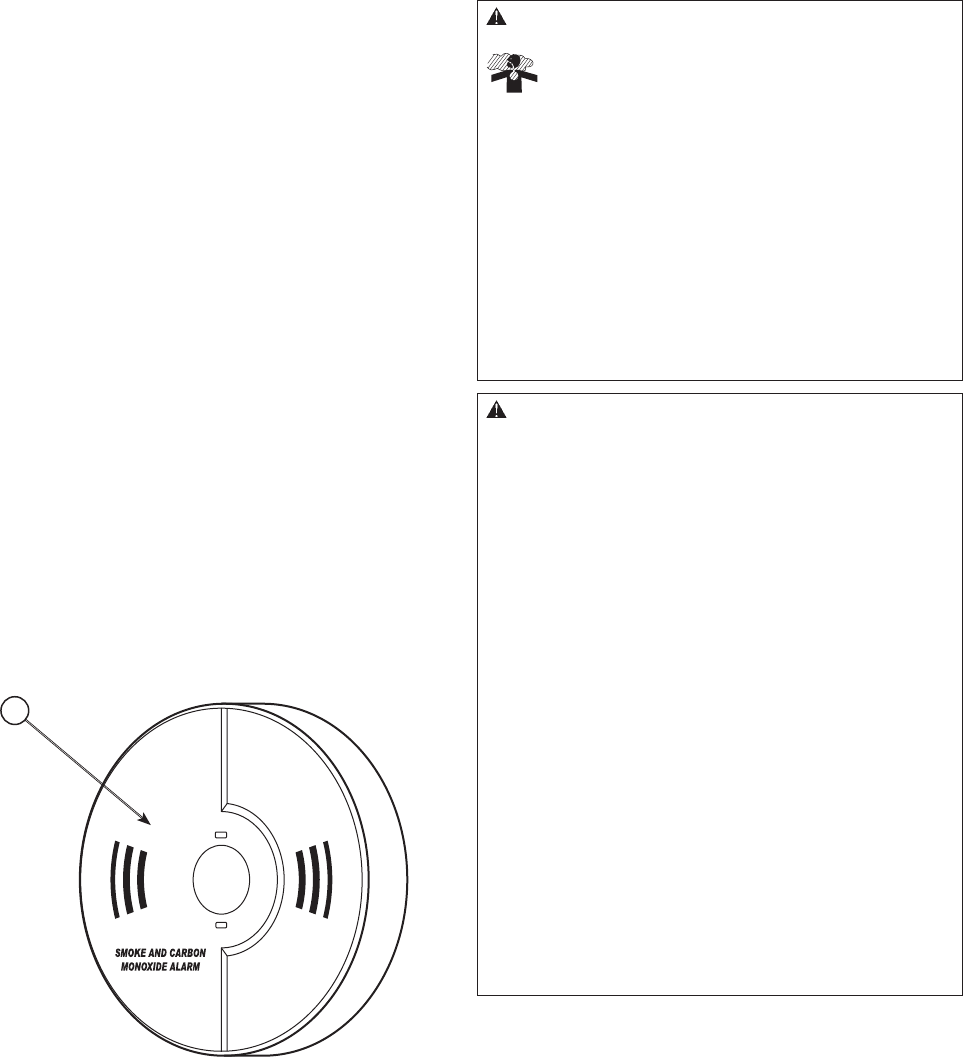
9
Generator Location
The actual physical location of your generator has a direct
affect on:
1. The amount of plumbing required to fuel your generator.
2. The amount of wiring required to control and connect
your generator.
Specific location guidelines are discussed in the installation
manual. Acquaint yourself with that information and confer
with your installer. Be sure to ask how your site might
affect installation costs and compliance with local codes
andstandards.
• Install generator outdoors in an area that will not
accumulate deadly exhaust gas.
• DO NOT install generator where exhaust gas could
accumulate and enter inside or be drawn into a
potentially occupied building or structure.
• By law it is required in many states to have a Carbon
Monoxide (CO) detector in operating condition in your.
Carbon monoxide detector(s) (A) MUST be installed
and maintained indoors according to the manufacturer’s
instructions/recommendations. A CO monitor is an
electronic device that detects hazardous levels of CO.
When there is a buildup of CO, the monitor will alert the
occupants by flashing visual indicator light and alarm.
Smoke alarms cannot detect CO gas.
• Ensure exhaust gas is kept away from any windows,
doors, ventilation intakes, soffit vents, crawl spaces,
open garage doors or other openings that can
allow exhaust gas to enter inside or be drawn into a
potentially occupied building or structure. Neighboring
structures may be exposed to the engine exhaust from
your standby generator and must be considered when
installing your standby generator.
• Wind and air currents should be taken into
consideration when positioning generator.
See the installation manual for full details on safe generator
location.
WARNING Running engine gives off carbon monoxide,
an odorless, colorless, poison gas.
Breathing carbon monoxide could result in death,
serious injury, headache, fatigue, dizziness,
vomiting, confusion, seizures, nausea or fainting.
• Operate this product ONLY outdoors in an area that will
not accumulate deadly exhaust gas.
• Keep exhaust gas away from any windows, doors,
ventilation intakes, soffit vents, crawl spaces, open garage
doors or other openings that can allow exhaust gas
to enter inside or be drawn into a potentially occupied
building or structure.
• Carbon monoxide detector(s) MUST be installed and
maintained indoors according to the manufacturer’s
instructions/recommendations. Smoke alarms cannot
detect carbon monoxide gas.
WARNING Exhaust heat/gases could ignite
combustibles or structures resulting in death or serious
injury.
• Exhaust outlet side of weatherproof enclosure must
have at least 5 ft. (1.5 m) minimum clearance from any
structure, shrubs, trees, or any kind of vegetation.
• Standby generator weatherproof enclosure must be at
least 5 ft. (1.5 m) from windows, doors, any wall opening,
shrubs or vegetation over 12 in. (30.5 cm) in height.
• Standby generator weatherproof enclosure must have a
minimum of 5 ft. (1.5 m) overhead clearance from any
structure, overhang or trees.
• DO NOT place weatherproof enclosure under a deck or
other type of structure that may confine airflow.
• USE ONLY flexible steel fuel line provided. Connect
provided fuel line to generator. DO NOT use with or
substitute any other flexible fuel line.
• Smoke detector(s) MUST be installed and maintained
indoors according to the manufacturer’s instructions/
recommendations. Carbon monoxide alarms cannot
detect smoke.
• DO NOT place weatherproof enclosure in manner other
than shown in illustrations.
A
NOT
for
REPRODUCTION



